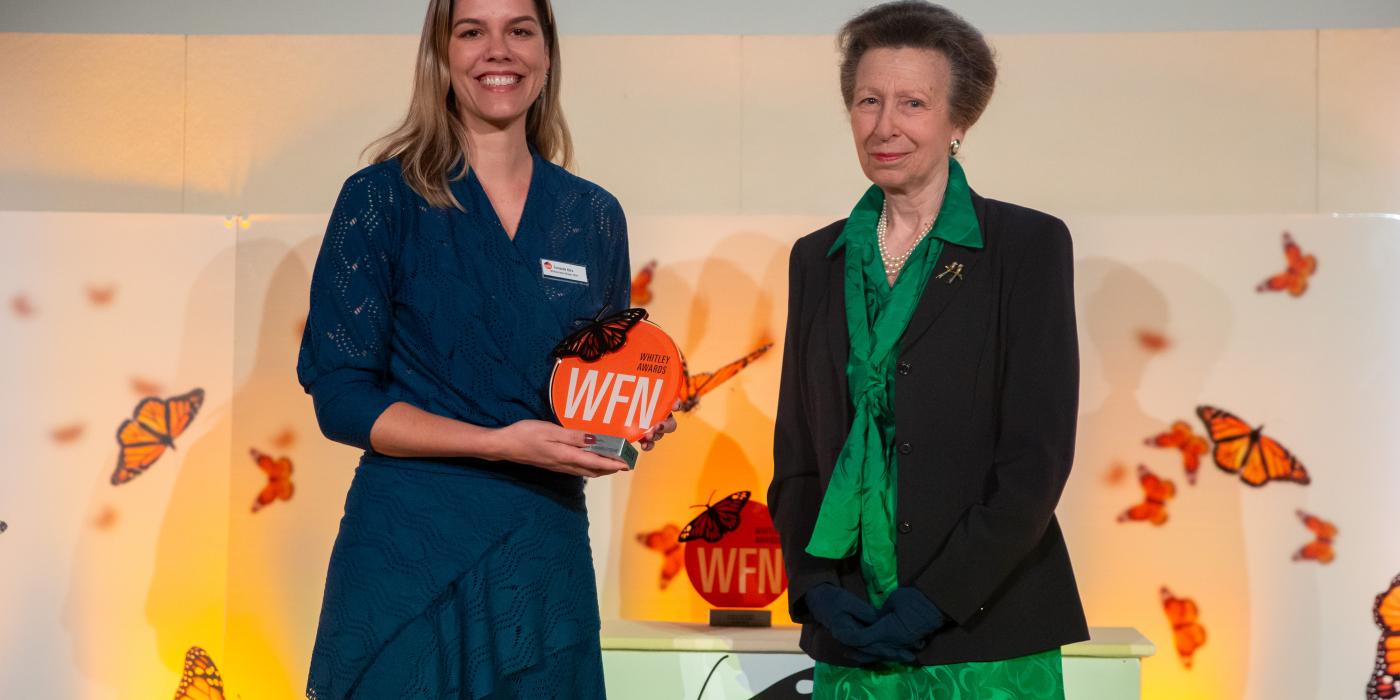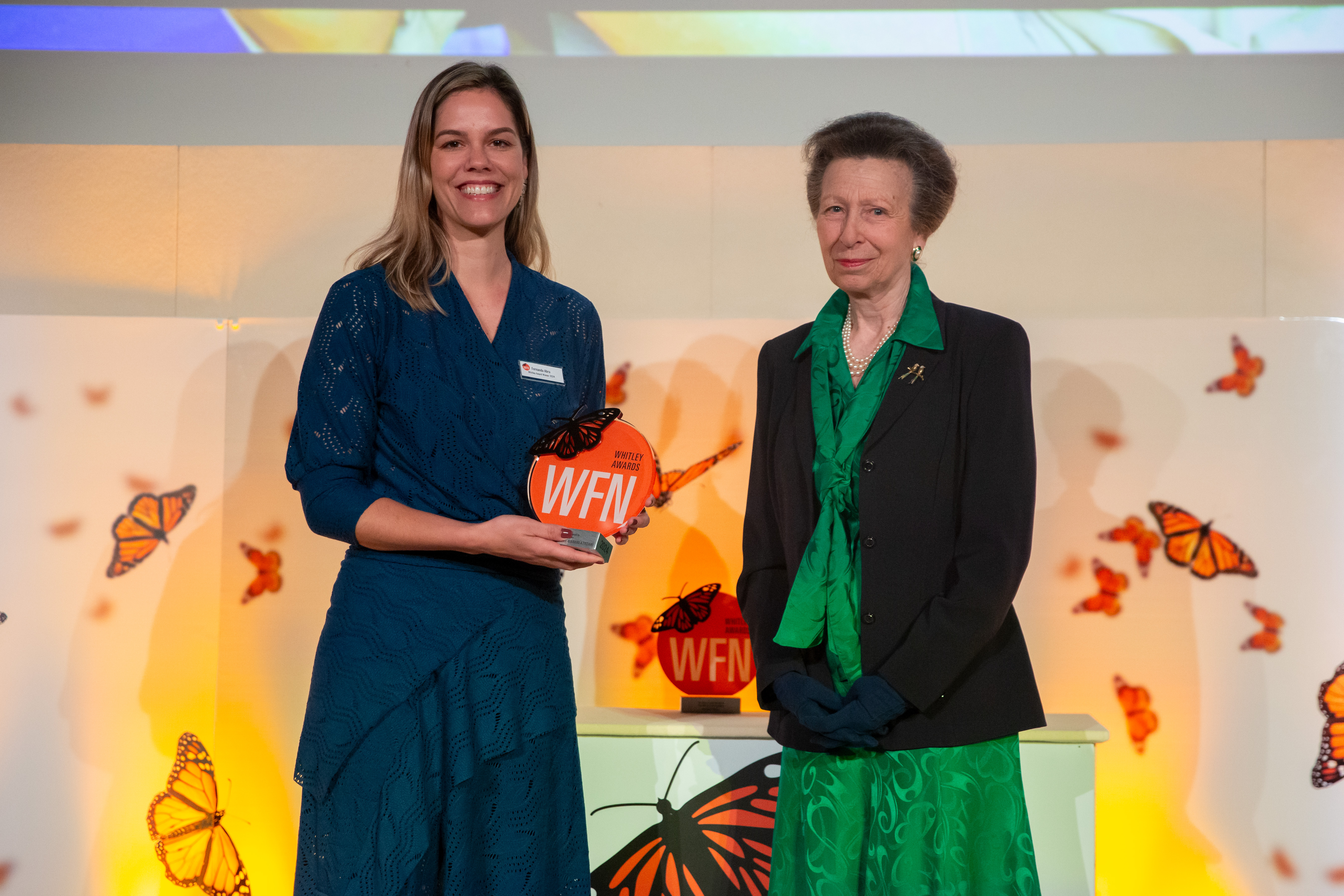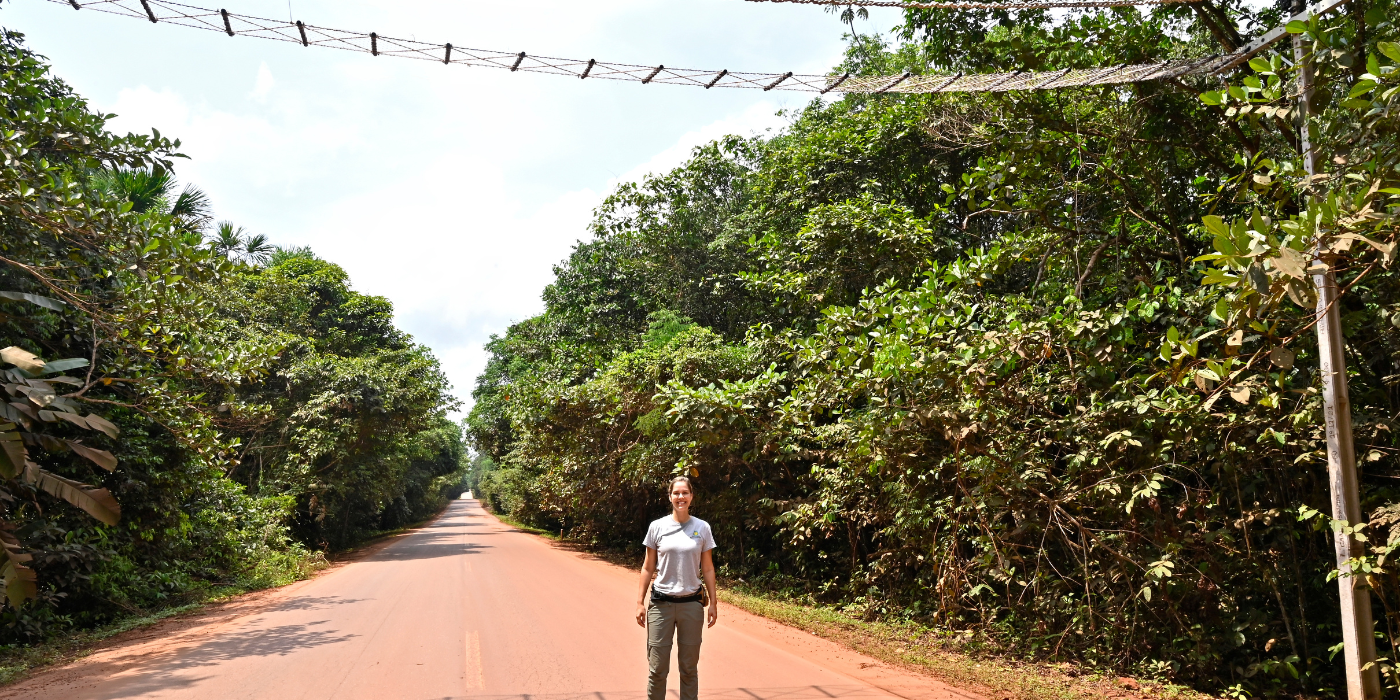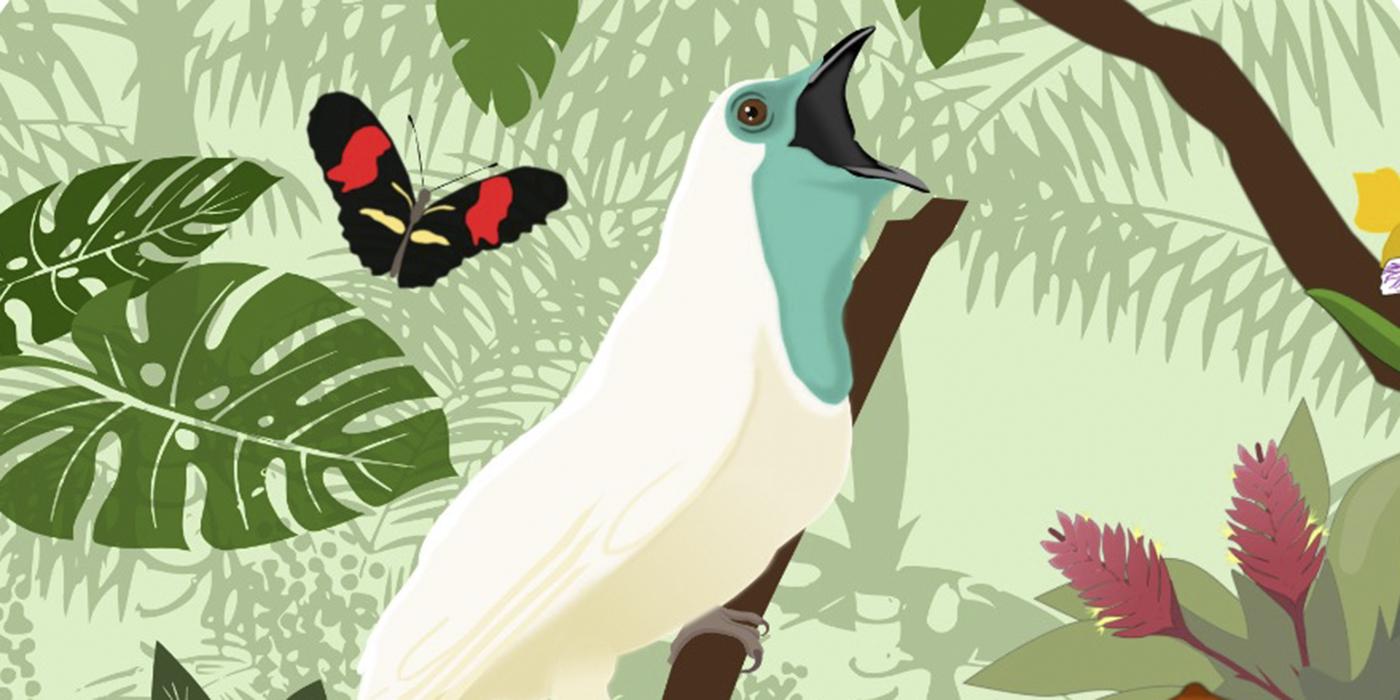Smithsonian Project to Save Amazonian Primates from Road Impacts Wins U.K. Whitley Award

Smithsonian’s National Zoo and Conservation Biology Institute postdoctoral fellow Fernanda Abra was recognized by the Whitley Fund for Nature (WFN) for her pioneering work to build and monitor low-cost canopy bridges over Highway BR-174 in the Amazon rainforest to protect tree-dwelling mammals from road impacts. Abra received the United Kingdom-based charity’s prestigious Whitley Award May 1, 2024.
Brazil has the fourth-largest road network in the world, which is expected to continue expanding. Forty percent of primate species are endangered in Brazil, with habitat fragmentation and vehicle collisions among the main threats they face. Recognizing a scarcity of research on this subject in Brazil, Abra and her team will monitor wildlife use of the bridges in one of the few science-based initiatives in the country to focus on threats of roads to arboreal species. Abra, who is also an associate researcher at Brazilian NGO Instituto de Pesquisas Ecológicas, plans to use the funding from her Whitley Award to measure the success of the bridges in increasing habitat connectivity for tree-dwelling species and reducing road mortality on BR-174 and expand the project to Alta Floresta, a frontier town located in the state of Mato Grosso that is one of the Amazon’s most deforested areas.
Eight primate species can be found in Alta Floresta, of which five are endangered specifically because of loss of natural habitat, fragmentation and road collisions: Groves’ titi monkey, black-faced black spider monkey, Schneider’s marmoset, Spix’s red-handed howler monkey and Purus red howler monkey. Her team has identified five locations where canopy bridges are imperative for reconnection. The bridges consist of steel cables, ropes and nylon nets and are anchored by concrete posts. Abra’s team used two designs: a rope lattice and a single cable encased in braided rope attached to trees with the cost of materials about $1,875 per bridge.
Under the Reconecta Project, each canopy bridge is monitored with two camera traps, recording the numbers of animals approaching, crossing or avoiding the bridges. Animals used the bridges within just 30 days of installation, with some species showing a preference for specific canopy bridge designs. The team recorded 500 crossings over an 11-month period, a number that is expected to rise as mammals acclimate to the bridges.
Key to the success of Abra’s “Reconecta Project” was the support of the Waimiri-Atroari indigenous community, whose 2.3 million hectares of land the federal highway bisects and whose territory is considered one of the best preserved in the Amazon. The Waimiri-Atroari people have lobbied for artificial canopy bridges for decades after Highway BR-174 became a source of wildlife mortality following its construction in the 1970s. The construction of the highway set off a surge of illegal deforestation.
“The Waimiri-Atroari people are the heart of the project,” said Abra. "They know everything about the local wildlife. They know about the ecology of the animals. They know about temporal and spatial patterns. And this was fundamental for us to establish the Reconnecta project here.”
More than 150 members of the Waimiri-Atroari community participated in the construction and installation of canopy bridges along a 125 kilometer section of the highway. Abra also collaborated with Brazil’s federal transport and environment agencies: the National Transport Infrastructure Department, the Brazilian Institute of Environment and Renewable Natural Resources and the Federal Amazonas University. She plans to train more than 200 people from the federal transport and environmental agencies that work with environmental licensing for roads in nine states in the Brazilian Amazon as part of her goal of establishing a culture of sustainable infrastructure.
Since Abra’s team built 30 artificial canopy bridges to restore forest connectivity for wildlife in 2022, they have been used by eight arboreal species, with the Golden-handed tamarin —an important cultural symbol for the Waimiri-Atroari community — being the most frequent user.
About the Whitey Fund for Nature
The Whitley Fund for Nature (WFN) is a UK charity supporting grassroots conservation leaders in the Global South. Over 30 years it has channeled £23 million to more than 200 conservationists across 80 countries. An early pioneer in the sector WFN was one of the first charities to channel funding directly to projects led by in-country nationals. Its rigorous application process identifies inspiring individuals who combine the latest science with community-based action. WFN’s flagship prizes–Whitley Awards–are presented by charity Patron, HRH The Princess Royal, at a prestigious annual ceremony in London at the Royal Geographical Society (RGS). Winners receive funding, training, and profile boost, including short films narrated by WFN Ambassador Sir David Attenborough.
# # #
Photo 1 caption: Fernanda Abra (left) received the Whitley Award from British royal Princess Anne during the ceremony in London, England.
Photo 1 credit: Whitley Fund for Nature
Photo 2 caption: For her project, Fernanda Abra (left) worked closely with members of the Waimiri-Atroari community, including indigenous leaders such as Wame Viana Atroari (right).
Photo 2 credit: Adriano Gambarini, Smithsonian's National Zoo and Conservation Biology Institute
Image Gallery



